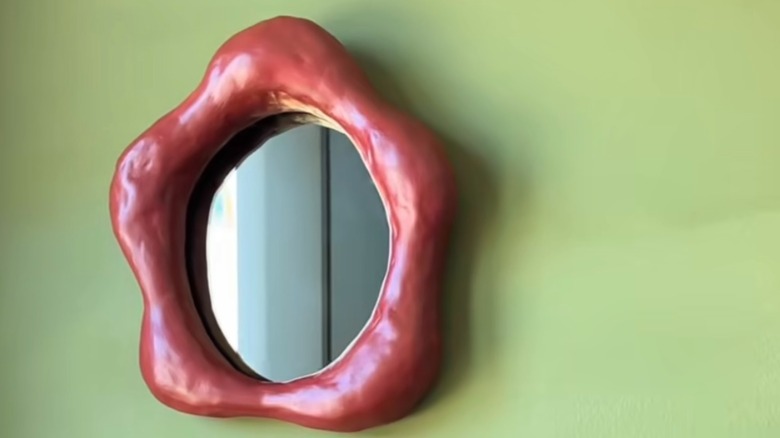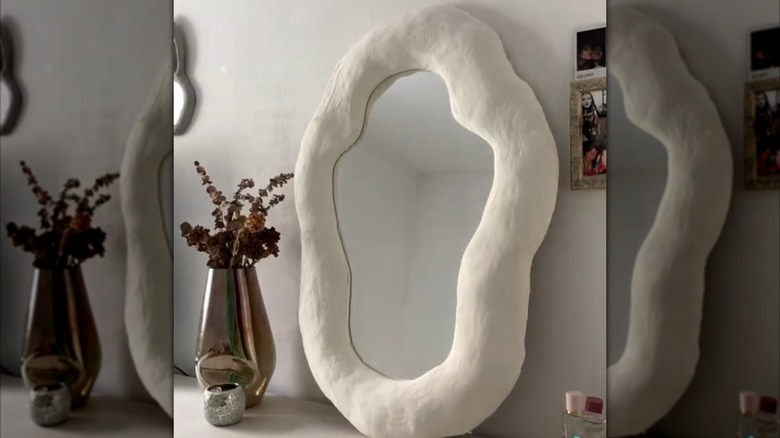Join The Squiggly Mirror Trend With A Tin Foil And IKEA Hack
We may receive a commission on purchases made from links.
As homeowners and renters shift their attention toward more organic and natural shapes and textures in their homes, we're seeing an uptick in popularity with amorphous mirrors. From squiggly mirrors to sculptural pieces, these natural shapes are dominating interior spaces. Many influencers, in particular, are scouring the internet to source some of the most eclectic mirror designs. Notably, Anthropologie sold an amorphous mirror that inspired many. However, while sold out on their site, the brand, Lemieux Et Cie, from which the hand-sculpted, asymmetrical mirror originates, retails the piece for $348. So, many TikTok creators eager to adorn their homes with this curvy and organic decor have opted for more inexpensive ways to incorporate organic texture into their homes. Instead of splurging on a luxury mirror that's ready to hang, creators have opted to DIY one of their own.
Adding an amorphous mirror to the home is a stunning way homeowners can bring curves into their spaces. And thankfully, DIYing one using tin foil (or other materials) and an affordable IKEA mirror makes this a great afternoon project for someone trying to save money on their home decorations. For those craving wabi sabi aesthetics or more raw and natural elements to ground their designs, an amorphous hand-sculpted clay mirror is a go-to choice that can be achieved even if you're on a budget.
How to DIY your own squiggly mirror with simple materials
To DIY a squiggly organic mirror, you could make a quick trip to IKEA to source a small circular mirror, like the IKEA FÄRGEK, which comes in a pack of four. However, you could also score a cheap round mirror at places like Walmart or Dollar Tree, if preferred. Or, you can use any frameless mirror of any size or shape and build the frame around it.
With the mirror secured, you'll want to look up some inspo on organic mirror shapes. For some, stenciling the organic shape without a reference might be preferred, while others want a subtle guide. Use a pencil and some cardboard to trace your mirror, and then start planning the organic shape of the frame around it. Using scissors or a craft knife, cut out the frame shape. Next, use tin foil and roll it up, bunching it where needed to create the shape, thickness, and texture of the frame. You can also use craft or packaging paper, hot glue, and masking tape instead of tin foil for this step.
Then, use air-dry clay to cover and sculpt the frame. Use a damp sponge and a scoring utensil to blend the clay as best as possible without seams. Clean up any edges with a craft knife. Follow the package instructions for air drying. When the frame is fully dried, sand the rough edges and prep it for painting. You could skip painting if you prefer a more organic, natural look. After your frame dries, attach hardware to the back of the mirror and hang it wherever you desire. This amorphous decorative mirror is super affordable and adheres to the perfectly imperfect decor style of wabi sabi that some HGTV stars swear by.

